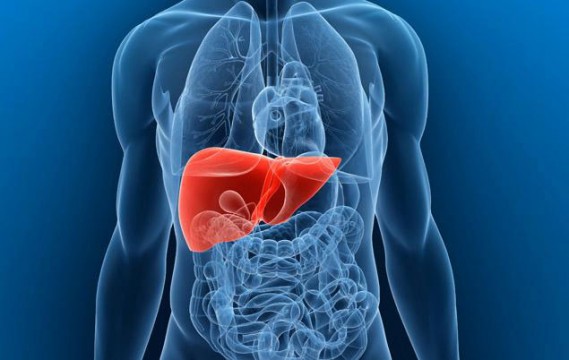Written by Peter G. Traber, M.D. on July 31, 2015
Liver fibrosis is scar formation in the liver which, when it reaches a large amount of scar tissue (called cirrhosis), results in liver failure and complications leading to death. The only available treatment for liver cirrhosis is a transplant, which is not only expensive, but is limited in supply (just over 6,000 annually in U.S.). Many liver diseases lead to fibrosis, including hepatitis, alcohol abuse, and fatty liver disease, which is called NASH (non-alcoholic steatohepatitis). Galectin is focused on liver fibrosis due to NASH because it is the most common liver disease and there are currently no available therapies.
Fatty liver disease, or NASH, can take decades to progress to advanced fibrosis and cirrhosis and we cannot predict which patients with early NASH disease will progress to advanced fibrosis. Galectin is encouraged by its galectin inhibitor, GR-MD-02, because it both reduces the inflammation of NASH and, importantly, can reverse liver fibrosis in pre-clinical animal models. The evidence for this has been published in peer-reviewed scientific articles (1, 2). Many companies in the NASH space are focused on early disease because the mechanism of their drug likely does not have a direct effect on fibrosis. In our opinion, our drug has a broader potential particularly in late stage NASH because GR-MD-02 has, in pre-clinical studies as reported in the above peer-reviewed articles, reversed advanced fibrosis and cirrhosis. In addition to not knowing which patients will progress to advanced fibrosis, a drug targeting early stage NASH is likely to require chronic administration for many years, thus possibly treating some patients unnecessarily, along with taxing the healthcare system with increased costs.
The medical community has encouraged our continued research as evidenced by references to our therapy in scientific publications. For example, Galectin Therapeutics’ compound that targets galectin-3 protein, GR-MD-02, is discussed in Expert Reviews in Gastroenterology and Hepatology, “In search of the magic bullet: can liver inflammation and fibrosis be reversed with medication?” (3) In their review of several potential mechanisms, the authors state that galectin-3 is “emerging as a possible target to revert liver fibrosis” and cite Galectin Therapeutics’ peer reviewed publication on preclinical data showing reversal of cirrhosis in an animal model and phase 1 clinical trial results.
Another recent reference is found in a review in Clinics and Research in Hepatology and Gastroenterology entitled “Novel therapeutic targets for steatohepatitis (4).” Arun Sanyal, M.D., of the Virginia Commonwealth University School of Medicine states, “Galectin has been targeted for the treatment of NASH with advanced fibrosis…Preliminary studies have confirmed its safety and tolerability. Phase 2 studies to clarify its efficacy are now under way.”
We are pleased that experts in the field have recognized our drug compound, GR-MD-02, as having potential in both the inflammation of NASH and in reversing advanced fibrosis. Galectin has initiated two phase 2 clinical trials to evaluate the possible reversal of liver fibrosis in NASH, the most common form of liver disease. The NASH-CX trial will focus on reversal of fibrosis in the most severe form of fibrosis called cirrhosis and the NASH-FX trial will attempt to show reversal of advanced fibrosis in a pre-cirrhotic stage.
These “CEO Perspectives” will be a regular feature of our communication activities and may contain forward looking statements within the meaning of the Private Securities Litigation Reform Act of 1995. These statements relate to future events and use words such as “may”, “could”, “expect” and others. These statements include those regarding the hope that Galectin’s development program for GR-MD-02 will lead to the first therapy for the treatment of fatty liver disease with advanced fibrosis and cirrhosis. For a discussion of additional factors impacting Galectin’s business, see the Company’s Annual Report on Form 10-K for the year ended December 31, 2014, and subsequent filings with the SEC. You should not place undue reliance on forward-looking statements. Although subsequent events may cause its views to change, management disclaims any obligation to update forward-looking statements
Please look for future editions in which multiple aspects of our development programs for unmet medical needs will be addressed.
Reference List
- Traber PG, Chou H, Zomer E, Hong F, Klyosov A, Fiel MI, et al. Regression of fibrosis and reversal of cirrhosis in rats by galectin inhibitors in thioacetamide-induced liver disease. PLoS One 2013;8(10):e75361.
- Traber PG, Zomer E. Therapy of experimental NASH and fibrosis with galectin inhibitors. PLoS One 2013;8(12):e83481.
- Zimmerman HW, Tacke F. In search of the magic bullet: can liver inflammation and fibrosis be reversed with medications? Expert Rev Gastroenterol Hepatol 2015;1-3.
- Sanyal AJ. Novel therapeutic targets for steatohepatitis. Clin Res Hepatol Gastroenterol 2015 Jul 6.





